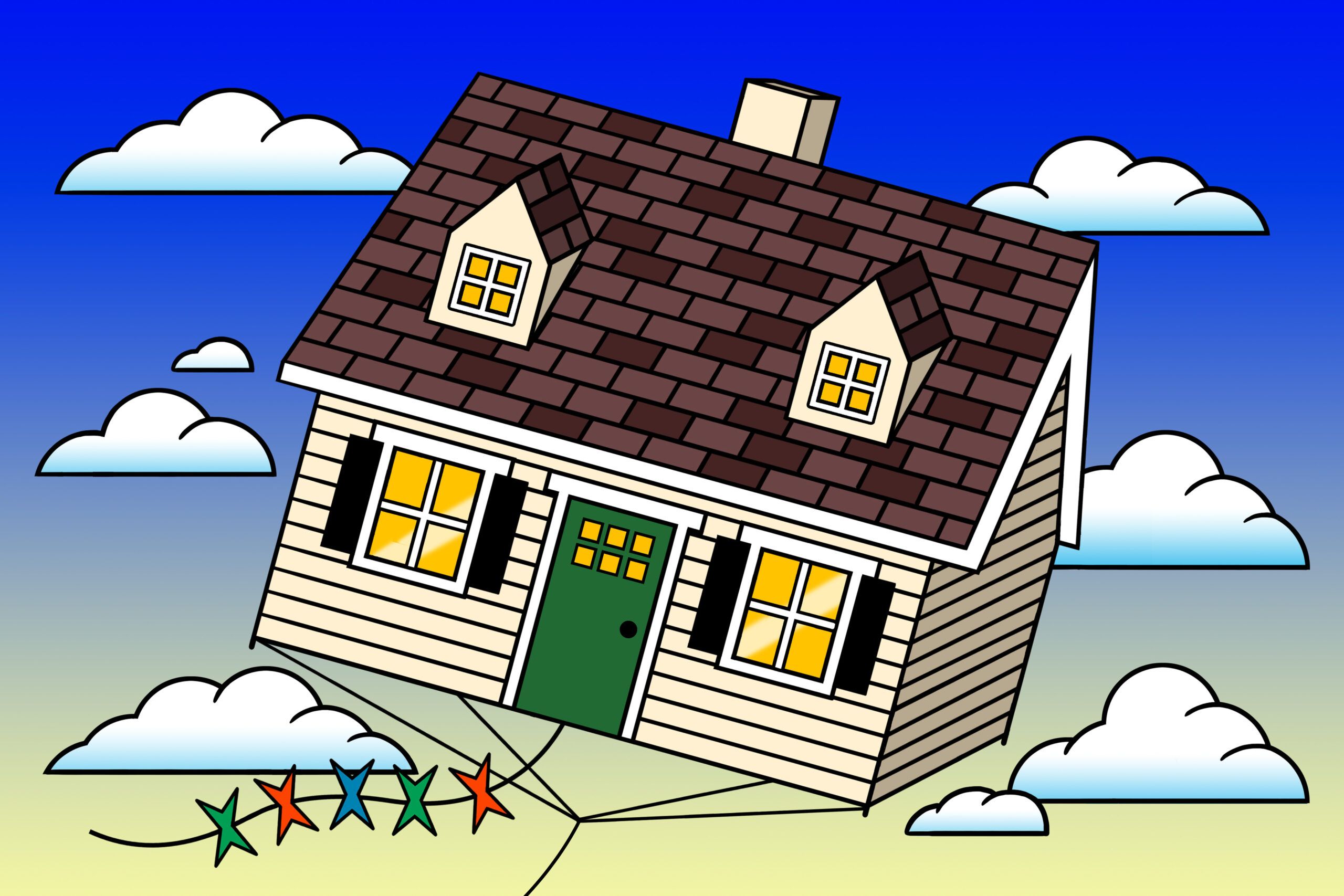This article appeared in the Fall 2023 issue of This Old House Magazine.
While there are signs that the Federal Reserve’s rate-hike streak may be coming to an end, it will likely take some time for mortgage rates to settle back down from recent highs. Rates for 30-year fixed mortgages in early July were above 6.8 percent, more than double their 2021 lows.
“Increased mortgage rates mean fewer home buyers are shopping relative to a year ago,” says Orphe Divounguy, a senior economist at Zillow, the online real estate marketplace. “This increase also means more homeowners are staying put, which is leading to extremely low inventory and driving up prices.”
Still, if you need a mortgage now, there are ways to pay less in interest.
If You’re Selling Your Home to Purchase a New One
You can expect sticker shock. If you bought your home or refinanced in recent years, you’re likely paying a much lower mortgage interest rate than you’ll find now. That said, you may have built up substantial equity in your home during that period that you can use to offset the higher mortgage costs. Home prices in the first quarter of 2023 were up 31 percent from the second quarter of 2020. If you’re able to lock in those
equity gains with a sale, you can roll that profit into the next home that you purchase and take out a smaller loan.
Another way to reduce the interest you’re paying is to buy discount points on your mortgage, which means pre-paying some of the interest to lower your ongoing monthly payment. Typically, one point costs 1 percent of the mortgage amount and reduces the rate by an average of .25 percentage points. You should calculate the monthly cost savings you get with the upfront points to determine how many months it will take to recoup the initial cost (on average it takes five years), and if it’s worth it. Using a mortgage-points calculator, such as the one at bankrate.com, can help. If you’re purchasing a home in a buyer’s market, you may be able to get the home seller to pick up some or all of the cost of the points.
Not planning to stay in the home for long? Consider an adjustable-rate mortgage (ARM). These loans, which start with a low rate for a set period of time—typically 3, 5, or 10 years—before adjusting based on current market rates, got a bad rap during the last housing crisis, but they’re useful in certain circumstances, including when you expect rates to fall in the future (and you can refinance), or if you plan to sell the home before the introductory period expires.
Still, it’s important to understand the risks. If market rates go up after the introductory period is over, you could end up paying significantly more. “One of the benefits of regulations following the 2008 financial crisis is that the documentation and disclosures for ARMs are much better about explaining the worst-case scenario, so you can see what would happen if the rate goes as high is it could,” says Michael Merritt, senior vice president of customer care at BOK Financial.
If You’re Purchasing a Second Home
You may see even higher rates and stricter credit requirements. Lenders tend to be more conservative when approving financing for second homes and may require a larger down payment. In some cases, you might consider using a home equity line of credit (HELOC) on your primary home to make a larger down payment on a second home. HELOCs may have variable rates, but you pay interest only on the money you borrow for the drawdown period of the loan, typically 5 to 15 years. Keep in mind, however, that with a HELOC, you’re putting your primary residence up for collateral, meaning that the bank could foreclose on it if you fall behind on payments. Plus, your payment will go up significantly once the draw-down period ends, so you should have a plan to pay off the loan before then. This may make sense if, say, you’re planning to sell your primary home and move into the second home in a few years.
If You’re Looking to Refinance
You’ll have to look at the numbers carefully. If you’re among the 85 percent of homeowners with a mortgage rate below 5 percent, it may not make sense to refinance; you could end up with a much higher rate (and monthly payment). But there are some instances in which refinancing can still be a smart financial move, including if you’re looking to roll higher-interest debt into a mortgage with a lower blended rate, or if you have a high mortgage and can lower it by refinancing. “Add up the monthly payments of the debt you are paying off and see if that is the same or less than the additional mortgage amount you will be paying. If it is close, then it should be worth it,” says Dale Robyn Siegel, author of The New Rules for Mortgages.
If You’re a First-Time Home Buyer
Look into state and federal programs that may provide assistance with your down payment or with getting the best possible rate. The FirstHome Program in Iowa, for example, gives some first-time borrowers access to below-market interest rates with fewer fees and as little as 3 percent down. Mortgage brokers can let you know which programs you might qualify for, and some lenders have private programs as well.
Tips for Improving Your Credit Score

One sure way to get the best mortgage interest rate is to have a “very good” credit score, at least 740, though recent rule changes mean that the spread between the rates for those with the highest scores and those with the lowest has contracted a bit. “Creditworthiness is super important to lenders,” says Eileen Tu, a vice president at Rocket Mortgage. “Lenders want to know that you’re going to be able to repay the loan.” To boost your credit rating, take these steps:
Check your credit report.
By law, you’re entitled to a free copy of the credit report from the three largest credit-scoring agencies (Equifax, Experian, and TransUnion). Request reports at annualcreditreport.com and look for errors. Mistakes are more common than you think.
Automate your bills.
Your payment history is the single biggest factor influencing your credit score. Setting credit cards and other loans to pay at least the minimum automatically ensures that you never make a late payment that dings your score again.
Avoid new loans.
“Hard inquiries” made by lenders evaluating your application for a new credit card or car loan can pull your score down temporarily. So hold off on applying for any such loans until after you’ve closed on a new mortgage.

